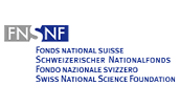Big Data makes intensive care better

One single critically ill patient treated in an intensive care or emergency unit generates up to 100 GB of data per day. The data comes from patient monitoring, but also from examinations such as computer and magnetic resonance tomography of the brain, laboratory results and biosensors.
It is often not possible to use the flood of information to identify risk situations and to make quick decisions.
Fewer false alarms – better patient safety
Conventional monitoring systems trigger around 700 alarms per patient per day, i.e. around one alarm every two minutes. A significant proportion of these are false alarms. If the number of false alarms could be significantly reduced, the amount of data would be much lower, which would make it easier to recognise critical situations and thus increase patient safety.
The neurosurgical intensive care unit of the University Hospital Zurich, ETH Zurich and IBM Research are working on this in the “ICU Cockpit” project. The principal investigator Emanuela Keller describes the long-term goal: “With this project, we want to initiate a fundamental development in emergency and intensive care medicine – and thus significantly improve the way hospitals work in day-to-day practice.”
Warning prior to critical events
For the project, data from more than 400 patients were systematically compiled from various sources. In addition, video recordings were used. All data were anonymised before further processing. Patients in the intensive care unit are very vulnerable in a number of respects, so protecting their data is of great importance. From the data, the researchers developed procedures for three applications:
1) filtering out false alarms;
2) early detection of epileptic seizures;
3) early detection of secondary brain damage.
The latter two methods are intended to lead to the detection of risk constellations and to warn of impending critical events for prognostic purposes. Thus, earlier therapeutic intervention is made possible, which improves the quality of treatment.
Today, therapy decisions are often made empirically, based on the experience and knowledge of those involved. It would be desirable to support the decisions with real-time data analyses and state-of-the-art medical knowledge from other sources, e.g. globally harmonised databases. The project shows how this is possible.
Visual presentation – automatic risk identification
The procedures are also to be tested with further data sets and then directly implemented in the course of a subsequent study at the University Hospital Zurich. The findings from the data analyses for patients in the intensive care unit will be visually displayed and risk constellations automatically identified. In addition, work will continue with IBM Research, which employs video recordings to detect epileptic seizures and other neurological disorders. From the researchers' point of view, these methods based on video recordings are also interesting as a means of better monitoring stroke patients with paralysis.
NRP 75 “Big Data”
Devices like smartphones are ubiquitous in our everyday lives. They are integrated into large networks and generate ever-increasing amounts of data. New solutions are needed to manage Big Data. Our way of life and work, as well as the way we interact within society, will change significantly because of Big Data. Appropriate regulatory measures are required and the public must be able to understand the effects of Big Data. The National Research Programme “Big Data” (NRP 75) encompasses projects on computing and information technology, law and social sciences as well as a wide range of Big Data applications.
The text of this press release, a download image and further information are available on the website of the Swiss National Science Foundation.
Prof. Emanuela Keller
Neurological Intensive Care Unit
Department of Neurosurgery
University Hospital Zurich
Phone: +41 44 255 56 71
E-Mail: emanuela.keller@usz.ch
http://www.snf.ch/en/researchinFocus/newsroom/Pages/news-191202-press-release-bi…
Media Contact
All latest news from the category: Information Technology
Here you can find a summary of innovations in the fields of information and data processing and up-to-date developments on IT equipment and hardware.
This area covers topics such as IT services, IT architectures, IT management and telecommunications.
Newest articles

An Endless Loop: How Some Bacteria Evolve Along With the Seasons
The longest natural metagenome time series ever collected, with microbes, reveals a startling evolutionary pattern on repeat. A Microbial “Groundhog Year” in Lake Mendota Like Bill Murray in the movie…

Witness Groundbreaking Research on Achilles Tendon Recovery
Achilles tendon injuries are common but challenging to monitor during recovery due to the limitations of current imaging techniques. Researchers, led by Associate Professor Zeng Nan from the International Graduate…

Why Prevention Is Better Than Cure—A Novel Approach to Infectious Disease Outbreaks
Researchers have come up with a new way to identify more infectious variants of viruses or bacteria that start spreading in humans – including those causing flu, COVID, whooping cough…



